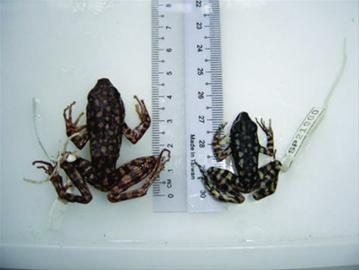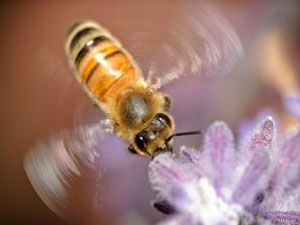Climate change is a serious threat to Earth's ecosystems. Increased greenhouse gases and the associated rise in temperature have been implicated in melting glaciers, rising sea levels, acidification of marine and freshwater systems, increased ultraviolet-B radiation and increased fire frequency. The past century has seen a nearly 1 °C rise in global average temperature1, with up to 7 °C of warming predicted by 2100 (ref. 2). Global warming has already led to significant shifts in the distribution, phenology and behaviour of organisms3, 4, 5. Of 1,700 plant, insect, amphibian and bird species examined in a review by Parmesan and Yohe5, 80% had a poleward range shift of 6.1 km per decade, and 87% had an advancement in the timing of phenological events, such as breeding or flowering, of 2.3 days per decade. Such changes in distribution and phenology in response to climate change have received much attention in the literature, but only recently have studies begun to address the effects of climate change on development and growth. For many organisms, development and growth, and thus organism size, are affected by temperature and water availability6, 7, 8. The increased temperatures and variability of precipitation associated with climate change are likely to influence the size of organisms, from primary producers to top predators9, 10, 11. However, as we discuss below, the degree to which organism size is affected by temperature or precipitation variability is likely to vary within and between taxa, which could disrupt ecosystem functioning. Here, we briefly summarize the changes in organism size that are most likely a result of climate change and increased carbon dioxide levels, and theorize on reasons for the observed patterns of size declines. We present evidence from fossil records, experimental and geographic comparisons, and recent studies implicating current climate change in the shrinking size of organisms. We discuss the mechanisms that are most likely to be contributing to the observed patterns, exceptions to these trends and implications for biodiversity. Ultimately, our opinion is that this effect will become much more pervasive, and that research should focus on quantifying size trends more broadly, and identifying proximate and ultimate drivers of size declines.
《自然-气候变化》:全球变暖导致动植物个头变小
时间:2011-10-23 阅读: 我要评论:

原文相关信息:
Shrinking body size as an ecological response to climate change
Jennifer A. Sheridan & David Bickford
Determining how climate change will affect global ecology and ecosystem services is one of the next important frontiers in environmental science. Many species already exhibit smaller sizes as a result of climate change and many others are likely to shrink in response to continued climate change, following fundamental ecological and metabolic rules. This could negatively impact both crop plants and protein sources such as fish that are important for human nutrition. Furthermore, heterogeneity in response is likely to upset ecosystem balances. We discuss future research directions to better understand the trend and help ameliorate the trophic cascades and loss of biodiversity that will probably result from continued decreases in organism size.
http://www.nature.com/nclimate/journal/vaop/ncurrent/full/nclimate1259.html
| ”我们失败了”:科学家正式宣布,大堡礁面临死亡 |
| 《Nature》:气候变化影响南极海狗生存 |
| 《Nature》:科学家绘制受气候变化影响的物种地图 |
| 《Nature》:美国甲烷实际排放量比预测值高50% |
| Scientific Reports: 汽车尾气危害昆虫,降低蜜蜂“工作效率” |
| 《Nature》:极端气候可能造成大气CO2浓度升高 |
特别声明:本文转载仅仅是出于传播信息的需要,版权归原作者所有,并不意味着代表本网站观点或证实其内容的真实性; 如其他媒体、网站或个人从本网站转载使用,须保留本网站注明的“来源”,并自负版权等法律责任; 作者如果不希望被转载或者联系转载稿费等事宜,请与我们接洽:service#environmentor.cn(请将#改为@)。
来源:Nature 作者:Environmentor (环境人 Environmentor.Cn)





